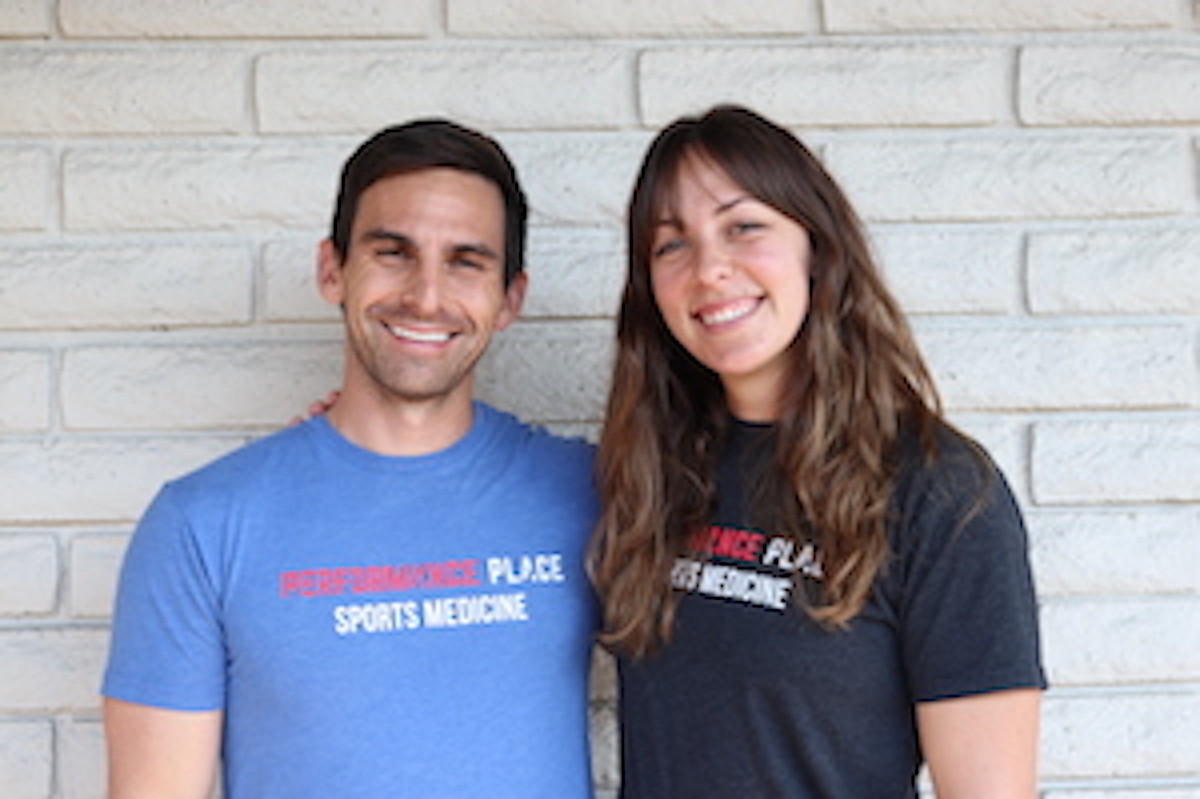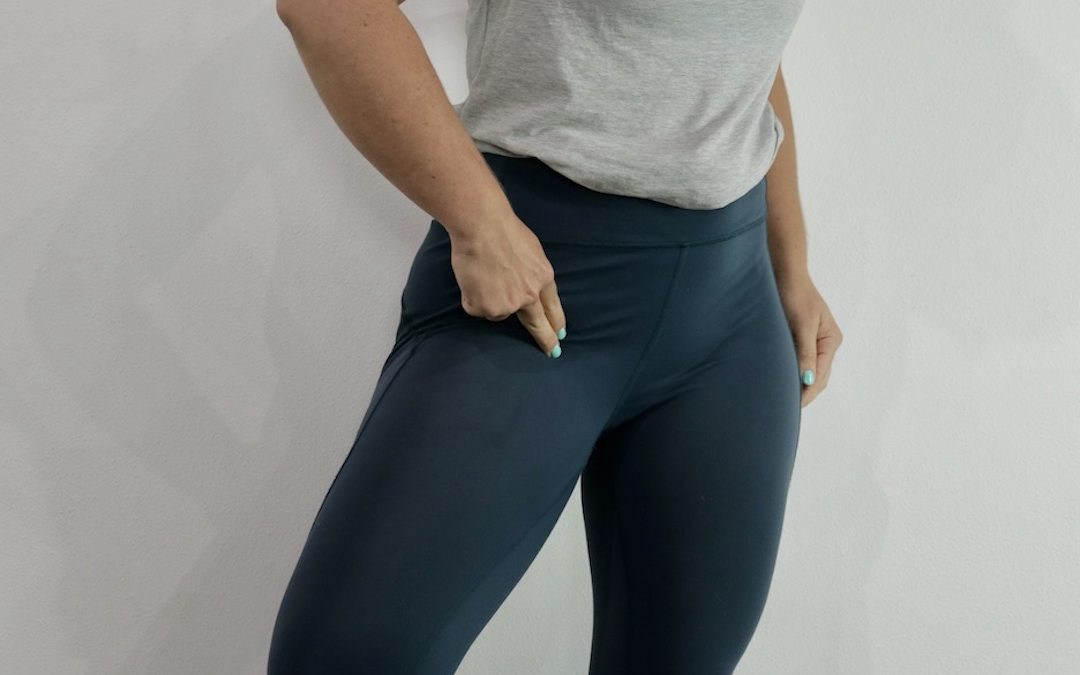Dancers Hip
Dancers Hip (aka coxa saltans, iliopsoas tendinitis, or Snapping Hip Syndrome) is a common cause of hip pain with ballet, contemporary and modern dancers. You may feel or hear a snapping/ popping sound as you swing your leg. Reduced with non-surgical treatment within weeks to months.
Hi, I’m Sebastian.
This article will share common signs, symptoms, and non-surgical treatments for a dancer’s hip. I’ll also cover some easy home remedies that work very well in the right circumstances!
Here’s a podcast for later, where I discuss Hip Injuries In Dance with Allie Christensen from Beyond the Pointe Podcast. It’s packed with tons of great info!
You will probably experience hip pain throughout your dancer career, but this does not mean you do not need to dance through the pain. Most do not require surgery to continue dancing or after their dance career has ended.
You may have already tried physical therapy or visited an orthopedic surgeon about how to treat your hip pain. Commonly we meet dancers who have been told they will require hip surgery to continue dancing. This can’t be further from the truth (most of the time).
Please read this entire article, use the resources/ links I have provided. Recovery could be hiding with a simple exercise or stretch.
Below is a testimonial of a dancer who I helped overcome hip pain using the theory and treatments I’ll be discussing in this article.
Hopefully, Tasha’s story will give you some hope. You can find her testimonial on our public Google Reviews.
I had pain in my hip and groin area for months and had had an MRI done while also visiting several doctors and chiropractors. As a dancer, I was really frustrated that nothing was helping to feel like I was making progress towards dancing again fully.
As soon as I met with Dr. Gonzales for our first virtual session, he had me do several exercises and was able to diagnose the pain to be an issue with my lower back.
I was so impressed with how he treated my hip issue by taking a whole-body approach and not just looking at it as an individual problem.
By addressing the lower back issue and also strengthening my torso and hips, I have been able to see tremendous progress in getting back to doing what I love and being free of the nagging pain I had had.
I was also impressed with how easy it was to do our sessions virtually!
He is great at watching to make sure I’m keeping the correct form while also giving great visual guides for finding more tension or contraction for certain exercises.
Don’t let the fact that you do not live nearby stop you from scheduling an appointment with him!
I highly recommend Dr. Gonzales for anyone seeking to see significant change and freedom from pain in their body!

Who Gets Dancers Hip?
Dancer’s hip can happen to all types of dancers (ballet, modern, and contemporary), as well as other athletes who jump, sprint, or swim. Soccer and sprinters commonly experience non-traumatic hip pain that presents with the same signs and symptoms.
Dancer’s Hip at a Young Age
Dancers of all ages experience hip pain while dancing yet disregard it as activity-related pain. We have seen dancers as young as 10 years old have hip pain so intense they need to stop dancing. It’s so sad!
At this young age, children suffering from hip pain are told hip dysplasia is the root cause of their pain. Some are told they will need surgery soon, but their future is not written in stone.
Dancer’s Hip In Older Dancers
We have also seen dancer’s into their 30s and 40s with similar hip pain while have been told they have iliopsoas tendinitis or Snapping Hip Syndrome. For many dancers with hip pain, stretching is no longer works.
Stretching use to fix their hip, but now it continues to hurt despite daily stretching. They, too, can improve with specific non-surgical treatment, mobility, stability, and strength exercises.
A common trend we see in dancers is that their hip pain started while only in the studio.
Splits, passé, développé, and adagio may hurt at first.
Next, your pain began to creep into daily activities like hip pain with sitting, walking, sleeping, and crossing legs. Recovery is faster if you address it while only studio work is affected.
Dancers over 20 are often told the root cause of their pain is hip impingement, hip labral tears, or tight hip flexors.
Note: Pain, numbness, tingling, or aches that go beyond your knee on the same side as the hip pain is more than likely spine referred.
You do not need to have lower back pain to have spinal referred hip pain.
If you are experiencing these sensations, contact us to help you recover without surgery, medication, or injections.
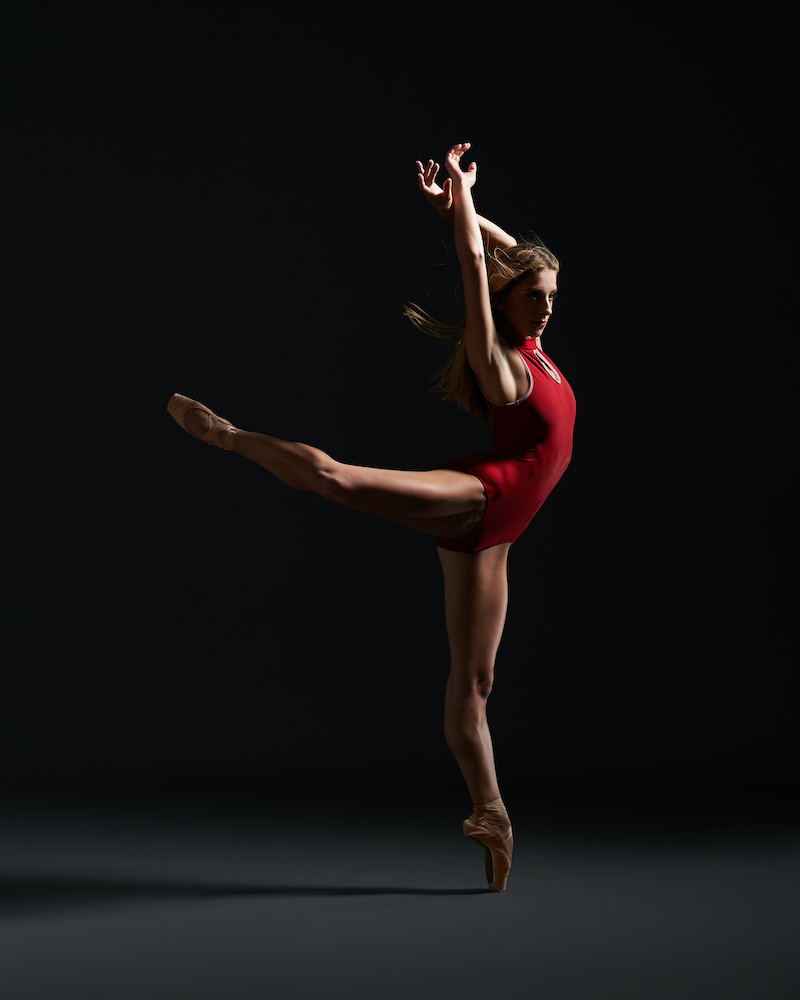
Causes of Dancer’s Hip
In short, excessive extension.
I am not talking about your leg extensions. I’m talking about a full-body extension.
- Arabesque
- Cambre Back
- Tendu Derriere
- Grand Jete
These are very archy, which can create a tight low back, grippy hips, and hip flexor tightness. Global extension patterns are the root of all evil when it comes to Dancer’s Hip, but it is also par for the course!
Too much lower back extension, booty out/ duck butt, ribs poking out, and legs behind you like a hip flexor stretch tends to create pressure on the sensitive structures.
Dance is an activity of extension patterns, especially ballet. Contemporary dance holds more rounded/ flexion patterns, which balance things out.
Before I start generalizing too much, I should forewarn you that every dancer’s reason for hip pain can be different.
We find younger dancers (pre 20s) tend to have more hip pain from excessive global extension patterns. In older (over 20 years old), we see the root cause from too many rounding patterns outside of the studio, such as sitting and driving at day jobs.
Having yourself inspected for YOUR reason is best practice. If you have questions about your specific situation, contact us here.
Let’s discuss our pre-20-year-old dancers with hip pain.
Too much extension creates Dancer’s Hip.
How does this happen?
Let’s start at the hip joint.
The hip joint is the joining of the femur bone and pelvis (acetabulum). The femur is held into place with strong ligaments of the hip joint and negative pressure from within the joint.
The hip labrum (like an o-ring) helps create this negative pressure and extra hip joint stability. With these passive hip structures in place, the hip joint is highly resilient.
It is also very mobile. The ball and socket geometric architecture of the hip joint allows for a large range of motion. Yet, some degrees of movement can become painful with suboptimal functioning of the surrounding regions.
Moving painlessly requires your hip to have adequate stability from other areas of the body.
You can’t shoot a cannon from a canoe, and you can’t move your hip painlessly through large ranges without the stability of surrounding regions.
The most important of these regions is the core.
The core muscles (and internal pressure) don’t just need to be strong; they need to be able to react as you move. Core endurance, or relative stiffness, is what helps position the pelvic in the best position for your hip to move painlessly.
Even a minor change in your pelvic position (duck butt) can rob you of your hip range of motion without adequate core stiffness. Core stiffness becomes more challenging while being in an extended position.
Duck butt posture couples with lower back extension, making it MORE challenging for your hips to move freely.
Booty-out tendencies (combined with low core stiffness) could be what is creating your hip pain. As noted before, booty out position makes core stiffness more challenging. No matter how many crunches you do, your habits will continue to drive your hip pain.
Hip Flexor Blamed For Dancer’s Hip
What about the hip flexor?
Everyone blames the hip flexor (iliopsoas muscle). Poor hip flexor! It’s just working so hard to do the work that your core isn’t.
As the hip flexor helps, it also becomes tight/ overused. Tightness of the hip flexor can result in snaps over a bony structure during leg movements to produce the snapping/ popping noise.
Frequent rubbing over a bone can result in peritendonitis and inflammation of the iliopsoas tendon as it passes into the hip. This is where the Snapping Hip diagnosis comes into play (which is correctable without surgery). The treatment of choice is corrective exercise, physical therapy, or physiotherapy.
Yet, not everyone who has hip pain while dancing ends up with hip flexor tendinopathy. Arresting the process as you find the iliopsoas becoming tight is vital.
Your hip pain, minus the popping, is the first sign.
As your hip flexor continues to contract/ help, your lower back arches more, your duck butt increases, and your hip pain increases.
The mechanics I just presented are the theory of hip impingement, which can couple with snapping hip. It is also the mechanics that can create spinal-referred hip pain (L1 spinal nerve root or the iliohypogastric nerve).
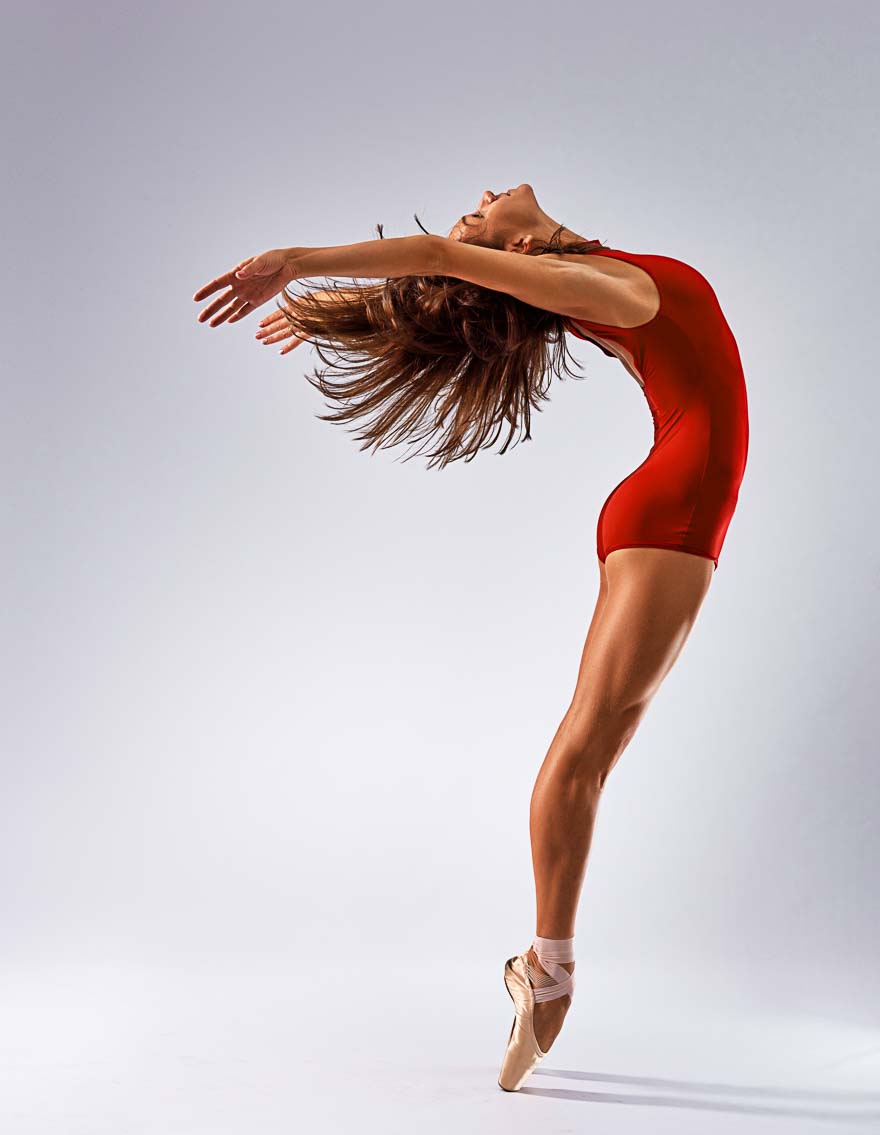
Spinal-referred hip pain will feel precisely like hip impingement, snapping hip (minus the snapping/ popping), and a tight hip flexor. However, you may notice some tender spots around your lower back around the higher low back region.
Regardless of how you spin it, too much extension is the root of the problem (in most cases).
We have helped hundreds of people overcome grippy hips, and like clockwork, their mind rushes to the hip flexor again.
Could it be my tight hip flexor? If I stretched, my hip flexor could get better?
While the logic of stretching is tight muscle is not wrong, you have to consider another way to release your hip flexor without stretching it. Stretching the hip flexor is more extension, which we are trying to reduce.
This endless extension circle continues if you don’t think of another way to reduce the feeling of your tight iliopsoas or iliacus muscle.
How can we release the hip flexor?
Simple in theory.
Activate your glute muscles, better core exercise selection, and fewer duck butts. I’ll so you some of my favorite exercises in a later section.
The application of how to do this is where most dancers get into trouble.
In a section to come, I’ll share 3 simple home remedies you can do to help reduce snapping, pinchy, grippy hips while dancing.
Hang tight!
Symptoms
Symptoms of a dancer’s hip (aka coxa saltans, iliopsoas tendinitis, or Snapping Hip Syndrome) vary from person to person, based upon their actual diagnosis/ root cause.
Here is a list of what many people experience:
- “Grippy” hip flexors
- Pinchy hips
- TFL or IT band spasm
- Adductor muscle trigger points
- Knots in muscles
- Deep glute ache
- Feeling like you have to pound your hip
- Snapping, clicking, or clunking of the hip
- Pressure in the lower back
- Feeling like you need to “pop” your hips or SI joint
You may not be experiencing all of these symptoms. Still, they are common findings the longer you have your problem.
Movement compensations tend to create a cascade of associated symptoms that all reversible with the right treatment program and coaching.
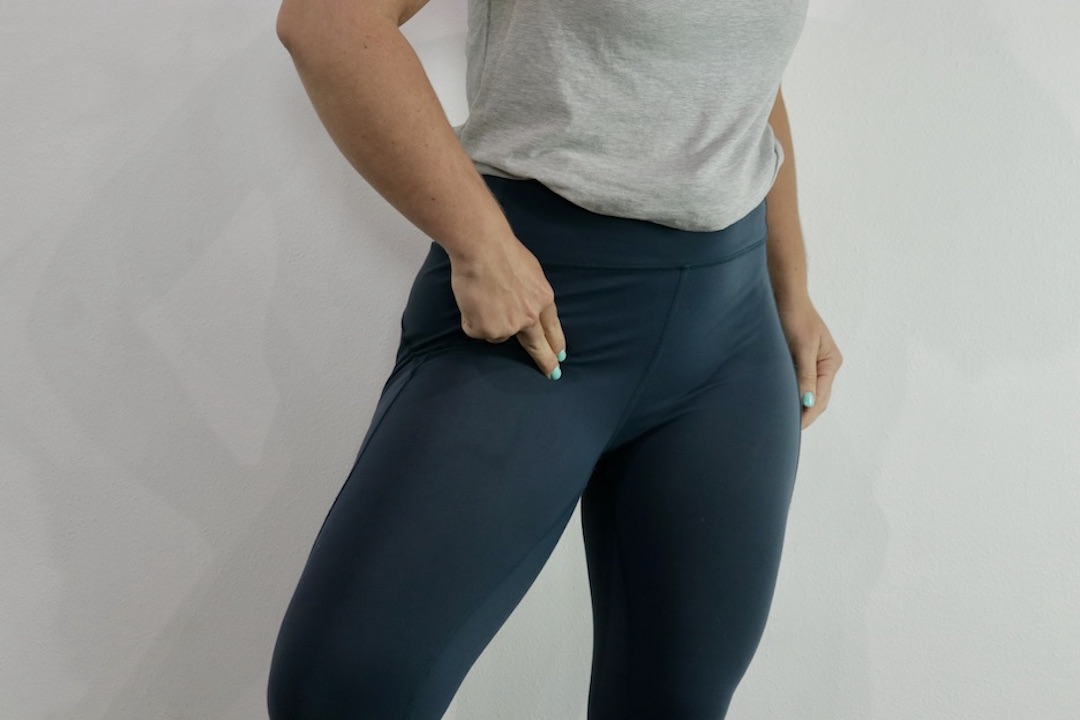
Diagnoses
The most common cause of dancers hip is hip impingement, not Hip Flexor Syndrome.
- Hip Impingement
- Hip Labral Tears
- Hip Flexor Syndrome (great video on testing impingement vs hip flexor)
- Sacroiliitis (our Youtube video)
- SI Joint Sprain/ Strain (video)
- Ilioinguinal nerve entrapment
- Lumbar Disc Herniation (video)
We always have to include the rare but possible sinister diagnoses like a tumor, infection, cord compression, and much more.
To learn more about the “Red flags,” go to this website this article.
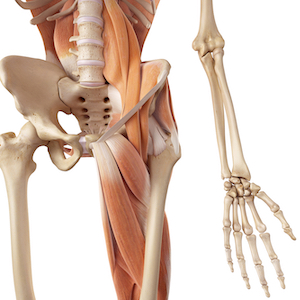
Simple Home Remedies
Reduction of dancer’s hip pain comes down to uncovering these three things:
- A correct diagnosis
- What makes you feel better?
- What are you doing that keeps the pain around?
1 – A correct diagnosis
We have created this webinar about hip flexor tightness and possible diagnoses that could be making it feel tight. It would be a good starting point in category #1.
It is on-demand here.
Being seen by an experienced medical professional is always best to allow them to stress test your spine, hip, and pelvis. A thorough medical history and examination typically take 30 minutes, certainly more than 10 minutes for hips.
We have found pars fractures (spinal fractures) in some of our clients while stress-testing their spines. This was a significant factor in how we helped them resolve their hip pain, as the spine was a contributing factor.
Note: Spinal stress fractures are more common in dance than you’d think. Are you a dancer under the age of 18 with low back pain? An experienced medical professional should examine you.
2 – What makes you feel better?
Once we find out what is causing your grippy hip, we can reverse engineer that process using simple exercises.
As I noted in prior sections, in pre-20-year-olds, too much extension creates the problem, so rounding (or anti-extension exercises) can often reduce it.
This video highlights a simple exercise we use to add some rounding back into life in high volume. It is called a frog’s pose.
While we are repurposing this “reset exercise” for something else in the video, note the position. I am not the most flexible person, so I am doing what I can. 🙂
When we teach this to dancers with hip pain, we tell them to round their lower back as much as possible as long as they don’t have hip or spine pain. It should be 100% painless.
Typically we hang out in this position for 2 minutes, five times a day for a week, and watch the hip pain melt away!
I know it seems simple, but it can be a powerful reset exercise when used in the right situation at a large volume.
We usually coach our dancers into a high tension, painless, yet effortful hardstyle plank after doing a reset. Note the low back round.
Doing this till 80% failure, with low break times, provides a ton of relief from Snapping Hip Syndrome and Hip Impingement!
3 – What are you doing that keeps the pain around?
As we discussed before, archy low backs and duck butts keep increase hip pain for many dancers.
How can you solve this? You probably can’t, but for a week, consider modifying life.
Go for more walks, sit in different seats, kneel when you are being spoken to in the studio verse standing dead legged.
Walking (if not painful) is the best option since it robs you of time throughout the day that you would spend doing what you were doing.
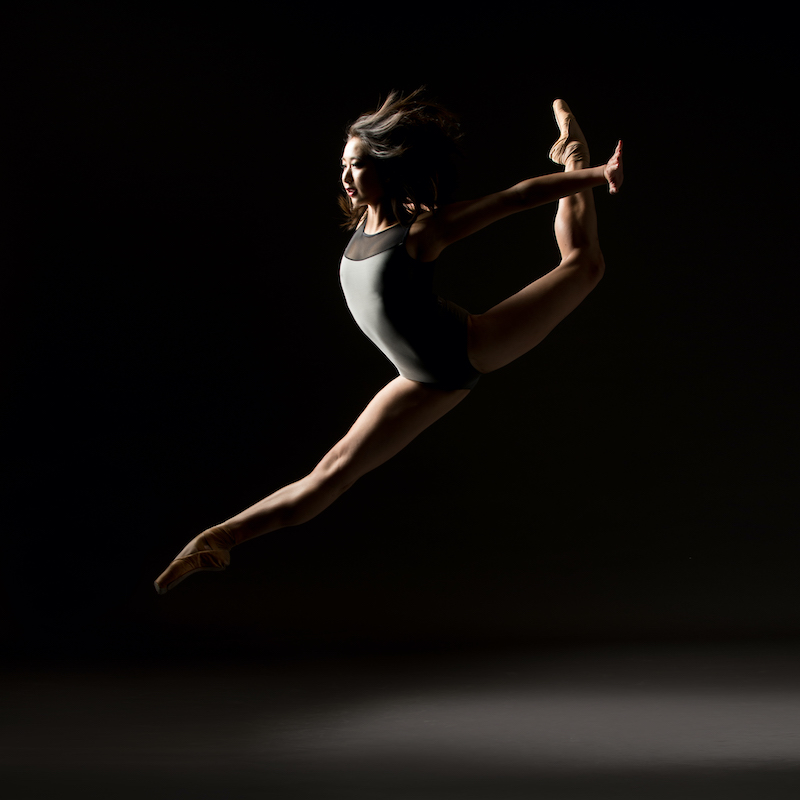
Non-Surgical Treatment
Dancers hip responds extremely well to hip and core rehabilitation exercises.
In my opinion, the best non-surgical treatment for a dancer’s hip is active care. Progressive exercises assist your body in becoming more tolerant of the extension that you will inevitably return to in your studio.
A good program aims not to avoid extension forever; it’s to build a better hip that can tolerate the forces that come with an extension movement.
I know all of the “experts,” and your instructor may tell you something else, but hear me out. I’ve been helping dancers avoid hip surgery in record time for over 12 years now.
Remember the client testimonial I shared at the beginning of this article?
I assure you that progressive exercises to build mobility, stability, and strength within regions of the body are the best plan of attack. Custom programming is the best route to go. This can be coached virtual or in person, yet in person is always the best.
Other non-surgical treatments:
Cortisone, Active Release, Rolfing, Adjustments, Prolotherapy, Deep tissue massage; I have tried all of these with many of my dancers with hip pain. None of these treatments work better long-term as a customized mobility, stability, and strength program with good coaching.
Cortisone, Active Release, Rolfing, Chiropractic Adjustments, Prolotherapy, stretching your hip flexor, stretching your hamstrings, and Deep tissue massage are great at reducing pain, but they will not keep it away.
As mentioned before, we need to reverse engineer how your hip got this way. It did not happen in a day, and it won’t return to normal function in a day either!
Performing the correct exercises and stretches over weeks to months will give you the pain-free hip range of motion that you’ve been looking for. Challenging corrective exercise is the most effective way.
Corrective exercise can also be a very effective way of reducing pain as well. If you tried the hardstyle plank and didn’t have success, consider the banded bridges instead.
Corrective exercises are like medication. If you do the right one in the right situation, you will be amazed about how good it works; you have to keep that feeling with weeks to months of doing the right program.
If you don’t have a heavy glute band, try this glute exercise to 80% failure.
Note: This may not live on our Youtube Channel yet. If it is not live, subscribe and get it when it does.
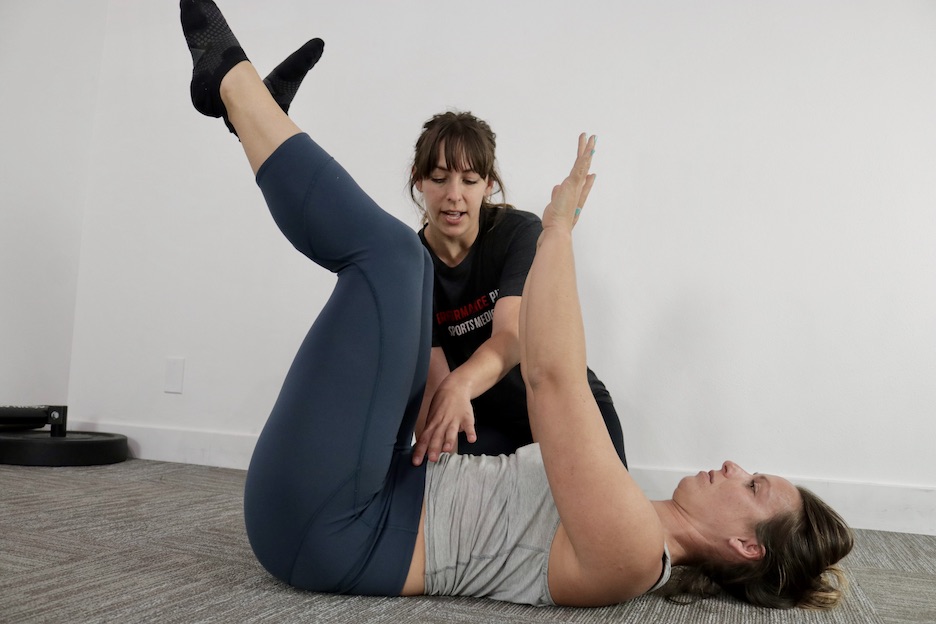
Recap
If you’re serious about getting over your dancer’s Hip, coxa saltans, iliopsoas tendinitis, Snapping Hip Syndrome, or whatever you want to call it, consider having someone help you.
The key is having some with expertise help programming and coach you on what to do.
I wish I could vouch for the skill level of every healthcare provider, physical therapist, chiropractor, acupuncturist, orthopedic, and physiotherapist, but I can’t. We all have different strengths and weaknesses. Myself included.
I estimate that over 95% of dancers we have seen with hip pain at Performance Place do NOT need surgery, medications, or injections to return to dancing pain-free.
Don’t get talked into doing surgery too soon. You can recover! The human body is remarkably resilient, and it can recover full function on its own with most conditions.
I’m Sebastian at Performance Place Sports Care. We can help virtually or in person. We are in Costa Mesa CA. Rather than tell you how great we are, allow our Google Reviews to speak for themselves.
Our clients have some amazing stories of recovery. Start your recovery story with our help.
Book your first session with us today!
Sebastian
Performance Place®
Virtual & Costa Mesa, CA
